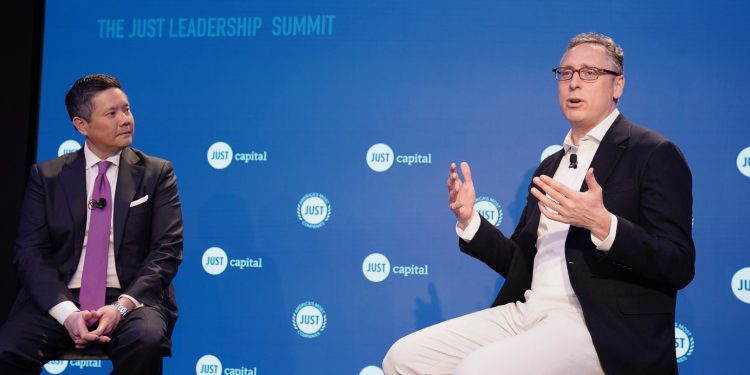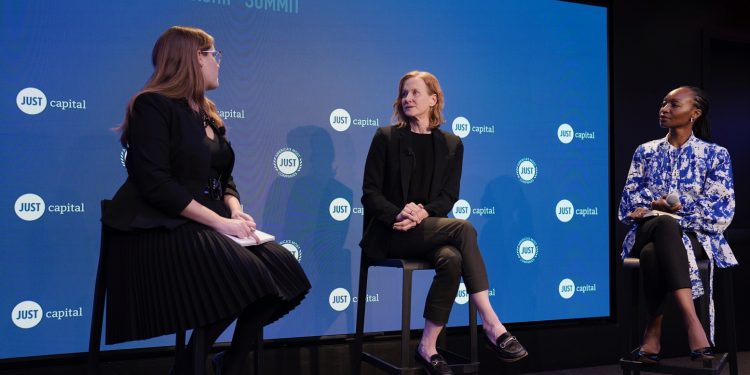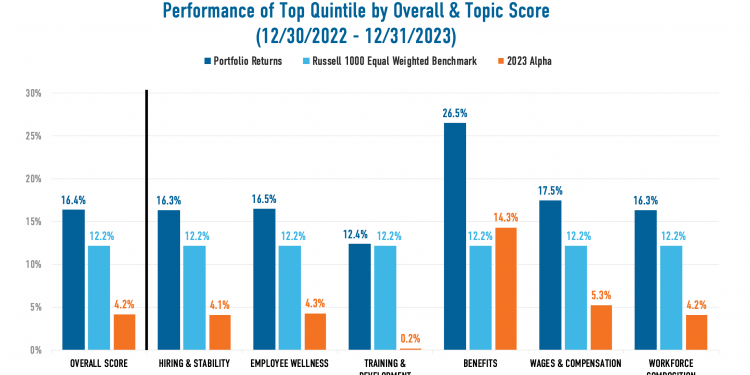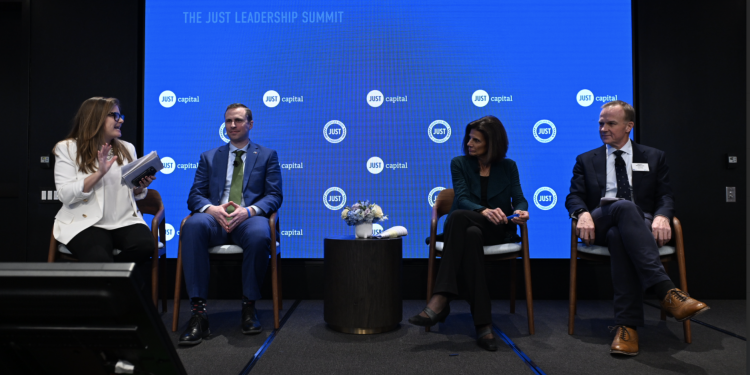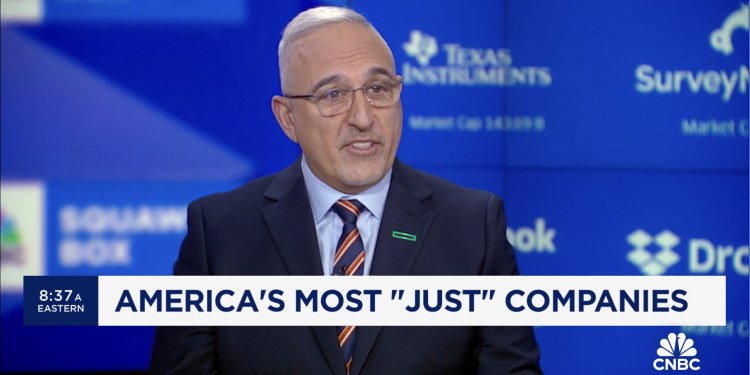JUST 100 Industry Leaders – Nike and AEP – Discuss Approach to Sustainability. Here Are the Key Takeaways.
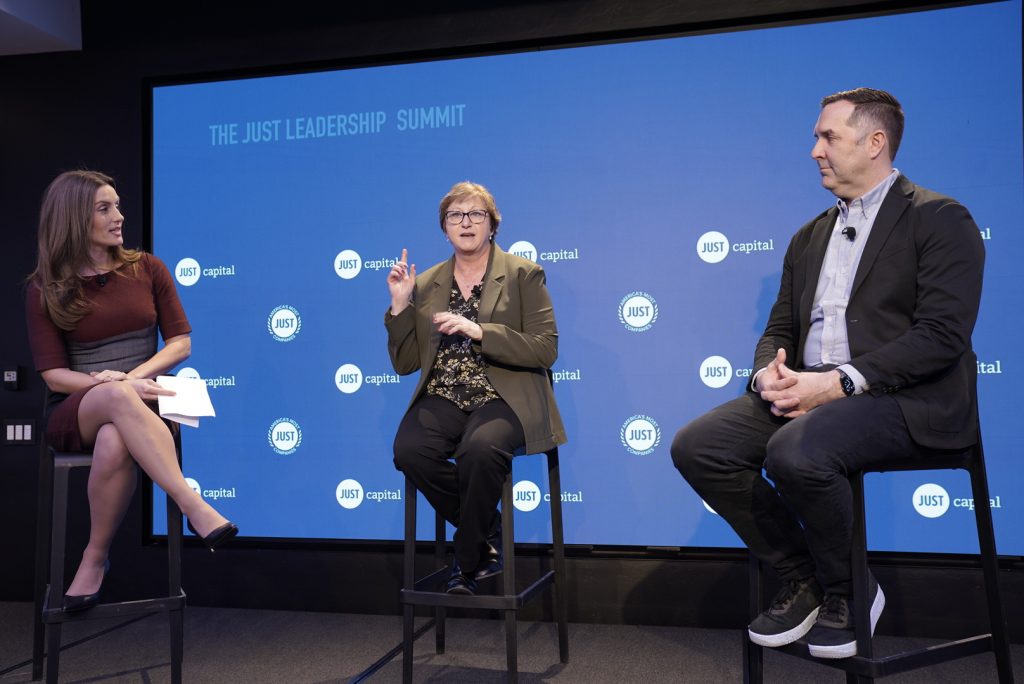
Amidst the rising ESG and sustainability backlash, it’s increasingly important to hear from corporate leaders taking concrete, meaningful steps to drive change on the key issues of our time. At last week’s JUST Leadership Summit, we heard from sustainability leaders of two of the top-performing companies in our 2023 Rankings – American Electric Power (AEP) (#14 overall and #1 in the Utilities industry) and Nike (#97 overall and #1 in the Clothing & Accessories industry).
In a panel moderated by CNBC Reporter Kristina Partsinevelos, AEP Chief Sustainability Officer Sandy Nessing and Nike Chief Sustainability Officer Noel Kinder highlighted the approaches and actions their teams have taken to create a more sustainable future for their companies, for their industries, and the planet overall. Nessing and Kinder spoke in depth about renewable energy and their companies’ efforts to reduce environmental impact, but both emphasized that a transparent, people-based approach is needed to drive lasting, meaningful change.
Watch the full conversation here, and dig into five key takeaways below – all of which provide broad tenets by which corporate leaders in any industry can forge their journey toward a more renewable and equitable future.
Operationalize sustainability
In talking about Nike’s “Move to Zero” goal to become both zero carbon and zero waste across operations, Kinder explained that setting clear targets and measurable outcomes is key, as well as identifying operational milestones to achieve along the way. These milestones represent an undeniable challenge to Nike’s leaders – holding the company accountable not only to its long-term ambitious goals, but to concrete steps on the path toward achieving them. These steps also provide an operational roadmap, detailing the role that teams across the organization can and must play to achieve larger carbon and waste reduction goals. They embed sustainability in all aspects of the company and deputize Nike’s team members to take ownership of the “Move to Zero” journey.
Think about people
For AEP, one of the nation’s largest generators of electricity, coal has historically been central to powering the communities the company serves. Faced with this monumental challenge to her company’s clean energy strategy, Nessing articulated the importance of putting people first – ensuring that the impact of this strategy on AEP’s employees and core communities is carefully considered. As the company prepared to close coal plants, AEP conducted economic analyses to better understand the impacts of doing so, seeing the plants themselves as community ecosystems that shape not only economic development but the lives of the people who live and work there. Nessing shared that almost all employees of closed plants have found jobs within AEP – emphasizing that, with a focus on communities and people, “there is a life after coal.”
Get out of your own echo chamber
As one of the founding members of the Sustainable Apparel Coalition, Nike has worked closely with its suppliers and direct competitors to develop shared practices and approaches to achieving sustainability goals. Key drivers of Nike’s carbon footprint include the materials and energy used to create its products – meaning that collaboration across its supply chain is crucial in the company’s renewable energy journey. This collaboration is often complex and challenging, necessitating discussion with competitors to ensure alignment and shared approaches in working with suppliers. Kinder noted that Nike’s success has been tied to his company’s willingness to step outside of its own “echo chamber” and instead harness the collective voice of its wider industry to drive change.
Look inward as you look outward
Unlike Nike, AEP’s global supply chain is not a major driver of its core operations – but the company profoundly impacts the communities where it operates both at home and abroad. Nessing explained that, as part of AEP’s people-based approach to sustainability, the company has begun to more carefully consider how its operations impact historically marginalized or disadvantaged communities, developing an Environmental & Social Justice Policy that commits to seeking input from impacted communities in its sustainability decision-making. By centering community voice in its clean energy transition, AEP has taken steps to shift its own priorities – ensuring an equitable approach to driving change. In discussing these leading efforts, Nessing noted that this is an “exciting time to be in this industry.”
Be transparent and show your work
Kinder emphasized that sustainability is a “catalyst for innovation,” and that in order for innovation to drive meaningful change beyond the walls of a single organization, transparency is key. With “ESG” currently a contentious term in corporate and investment communities, Kinder and Nessing both agree it’s important not to shy away from the conversation and most importantly, that corporate leaders stay the course. In coming to the table – with employees, investors, communities, partners, competitors, and more – it’s critical for corporate leaders to be able to show their homework, to demonstrate the reasons for their actions and the impacts of change. Nessing noted that AEP has gotten pushback, particularly from some of the company’s local communities. However, this pushback has not led her company to change course, but instead invite everyone into the conversation and share resources to ensure a just and equitable transition.
Watch the full conversation below.
For corporate leaders looking to unpack your company’s performance in the 2023 Rankings and gain insights into how to improve on the issues that matter most to the American public, please reach out to corpengage@justcapital.com.
